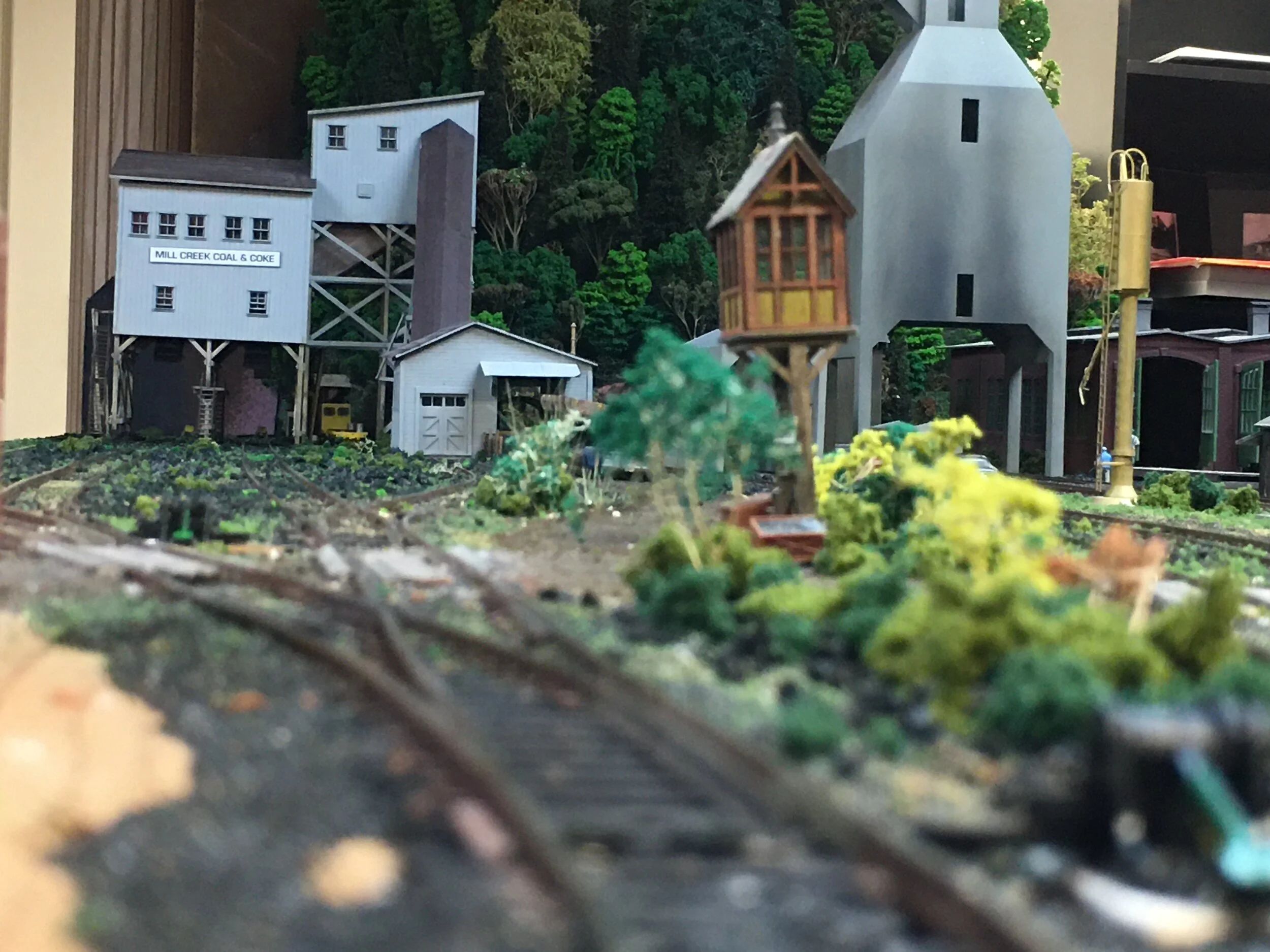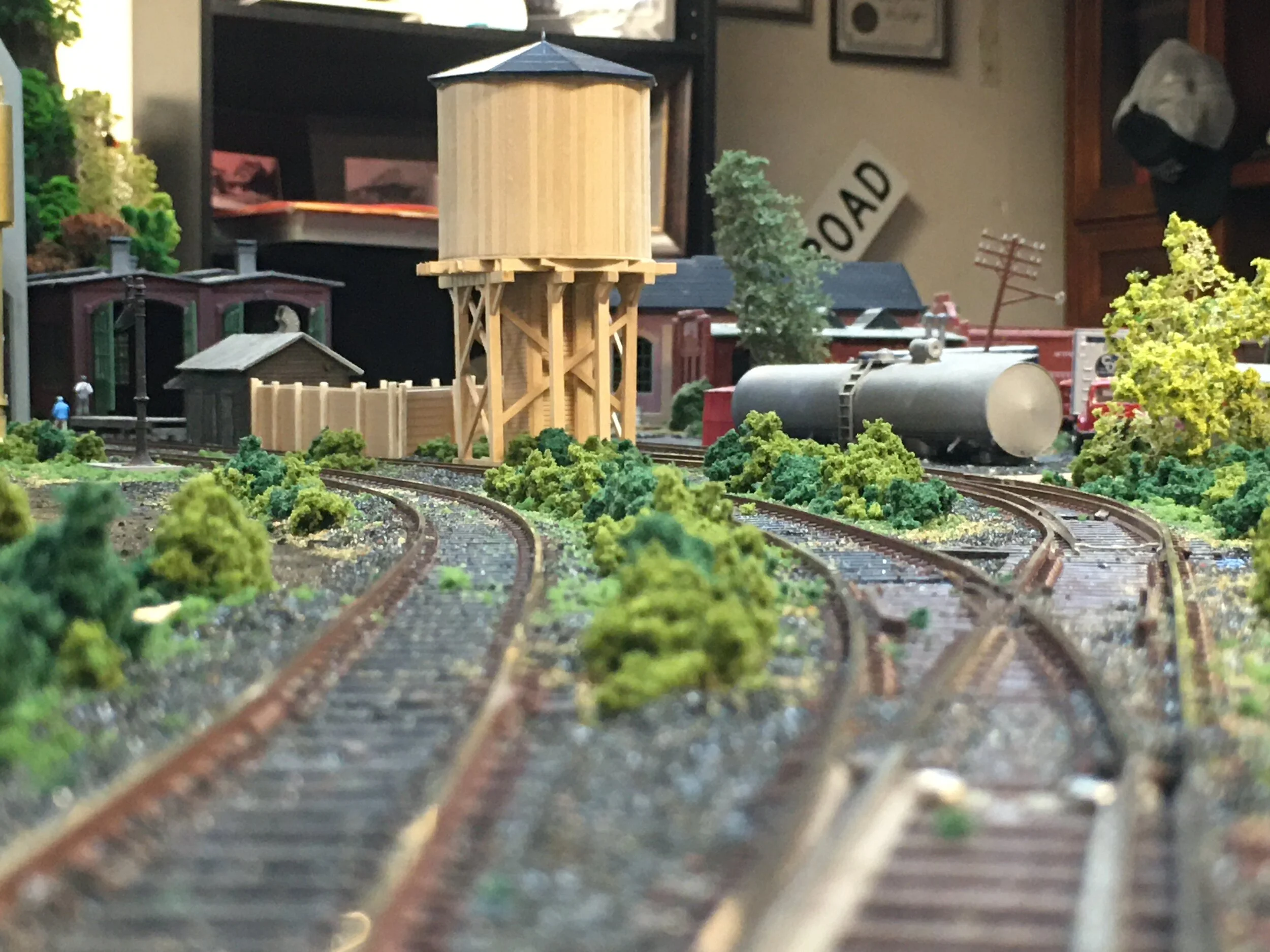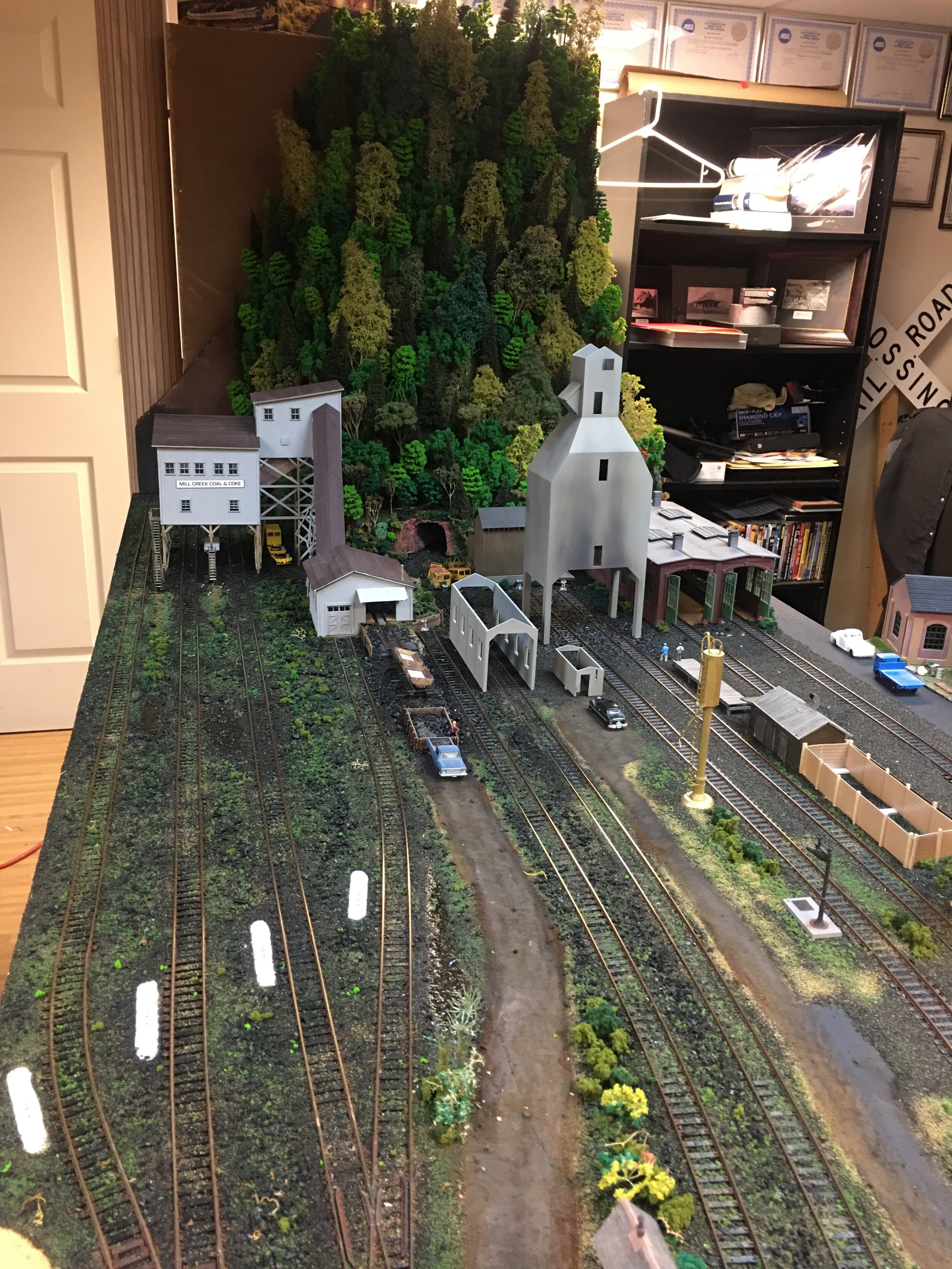West Virginia Branchlines
Bill McAleese’s HO scale layout is a loose rendition of the Baltimore and Ohio spur that wound its way north and south through the mountains of central West Virginia from 1950-1955. The layout was started in 2006 and when completed it will run from Grafton, Maryland to Huntington, West Virginia. Currently, the layout footprint takes up two thirds of a 24x40 foot basement and is multi level. It does run on Digitrax DCC with a planned interface with JMRI and a dispatch area for more prototypical operation when the Harford Associates for Railroad Modeling do stop by for operation sessions. Eventually, signaling will be incorporated, and all of the mainline turnouts, as well as all train movements around the layout, will be coordinated by tower operators and a dispatcher.
This layout currently incorporates the towns of: Ashland Kentucky, which on this layout serves as the end staging yard for the Chesapeake and Ohio; Huntington West Virginia, which serves as the end of the Baltimore and Ohio trackage and an interchange town with the Chesapeake and Ohio; Charleston, West Virginia modeling Slack Street yard which was an interchange yard with the New York Central; Elkins, West Virginia which served as an interchange with the Western Maryland and Chesapeake and Ohio railroads; and Richwood, West Virginia vía Burnsville West Virginia which highlights the MT Koal mine (fictitious name) and the TT and R logging camp (also fictitious name) that the Baltimore and Ohio had acquired. There is a planned expansion to include the spur of the Cheasapeake and Ohio which paralleled the Baltimore and Ohio through West Virginia along with a fictitious spur that will continue north out of Grafton, Md. and terminate at Mt. Renard, Pa. for the Sylvania Central railroad.
The commerce on the railroad includes coal, timber, cattle, and miscellaneous goods with the occasional short passenger trains thrown in the mix. The steep grades (between 2 and 3%) make for realistic operation and on larger trains, require the assistance of helpers. You will see the prototypical heavy steam power of the early to mid 50’s (mallets and 8-10 wheel configurations) as well as early diesels. Some of the motive power was specific to other regions and time periods of the railroads, but were favorites that Bill incorporated. There are many scratch built modern bridges along with a few kit bashed ones which connect the towns. As you walk through the layout you will see some super detailed model buildings along with many super detailed locomotives and rolling stock. Be sure to ask for the back story behind each one.
Come take a trip back in time and into the hills of West Virginia.
Layout Gallery










